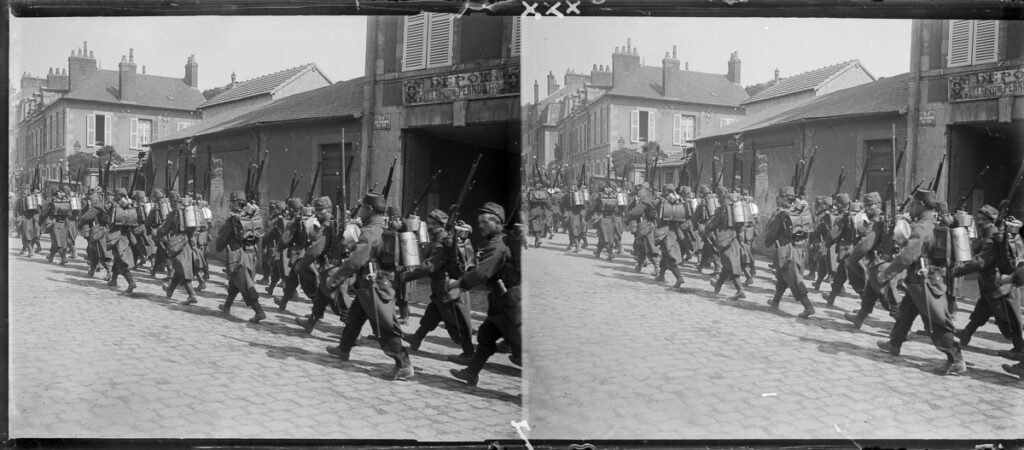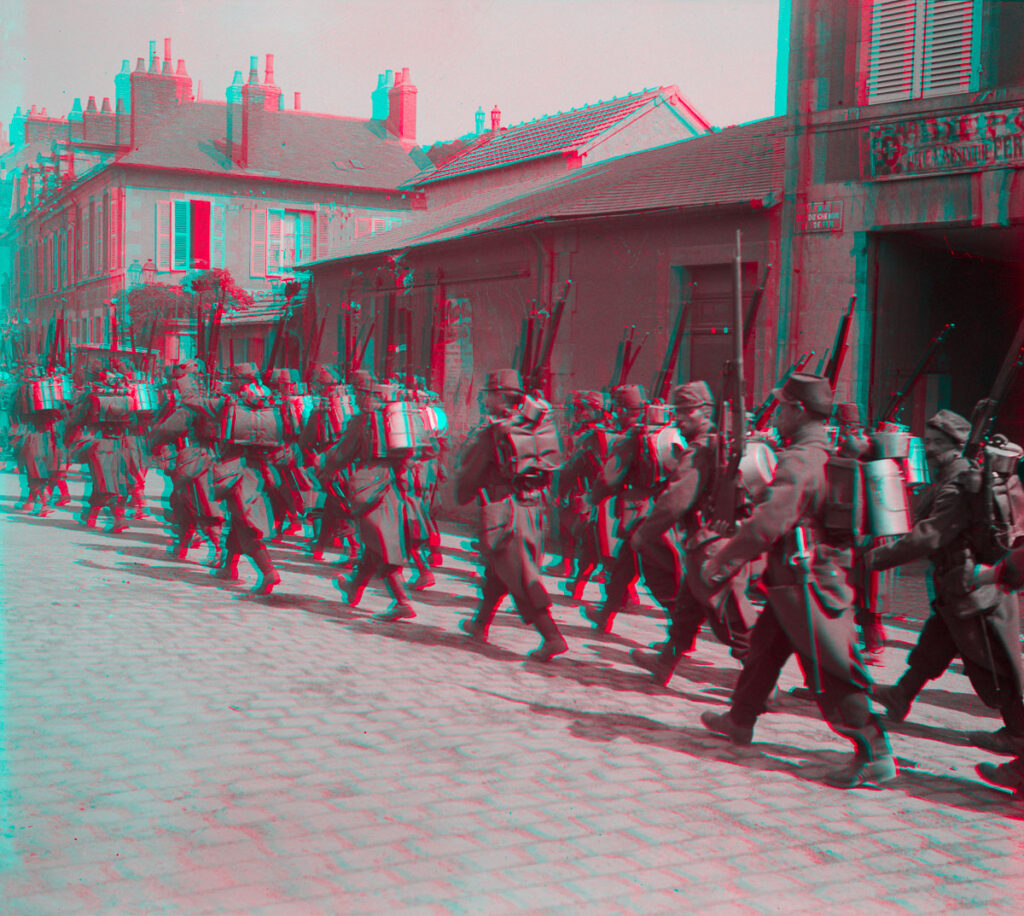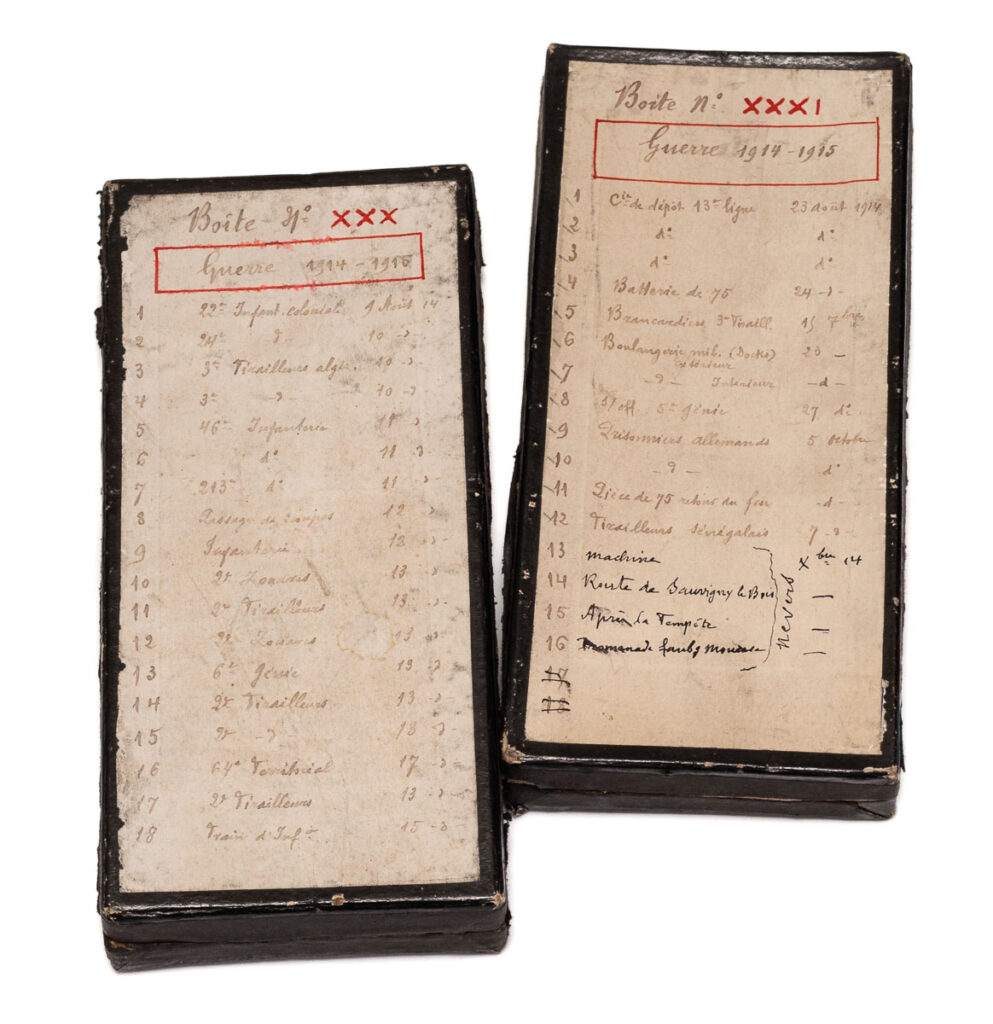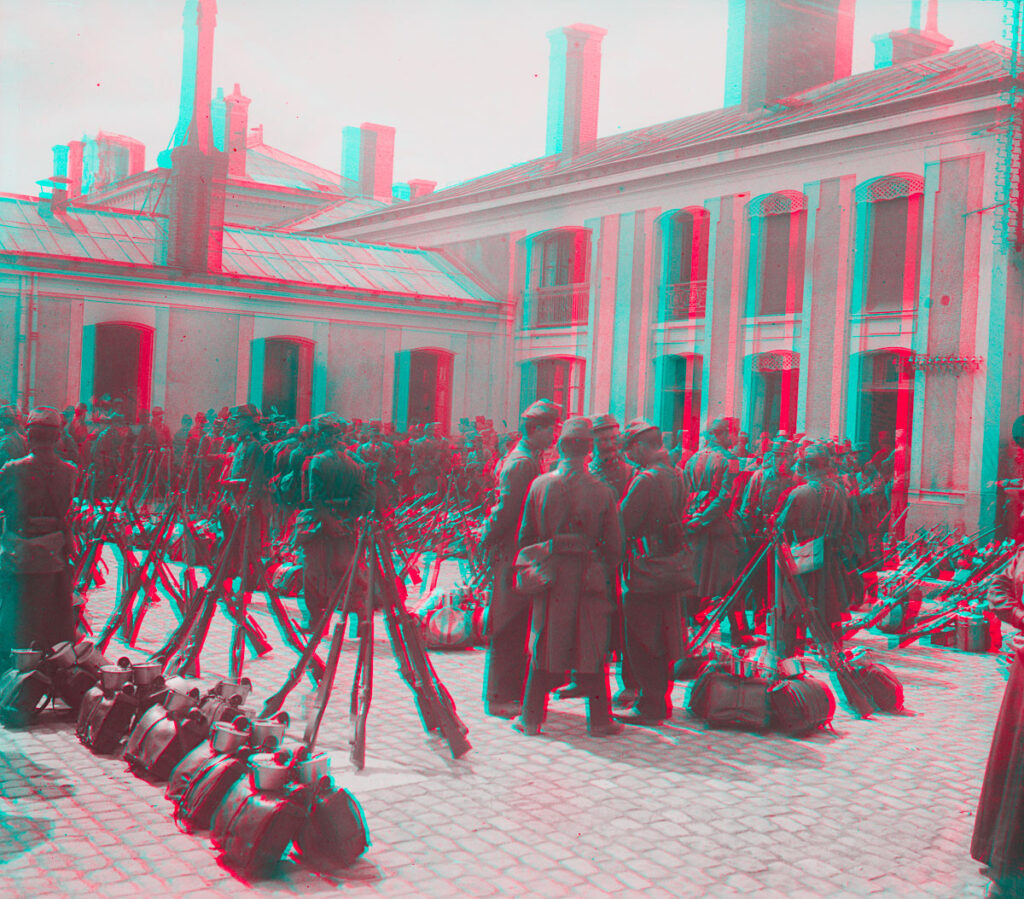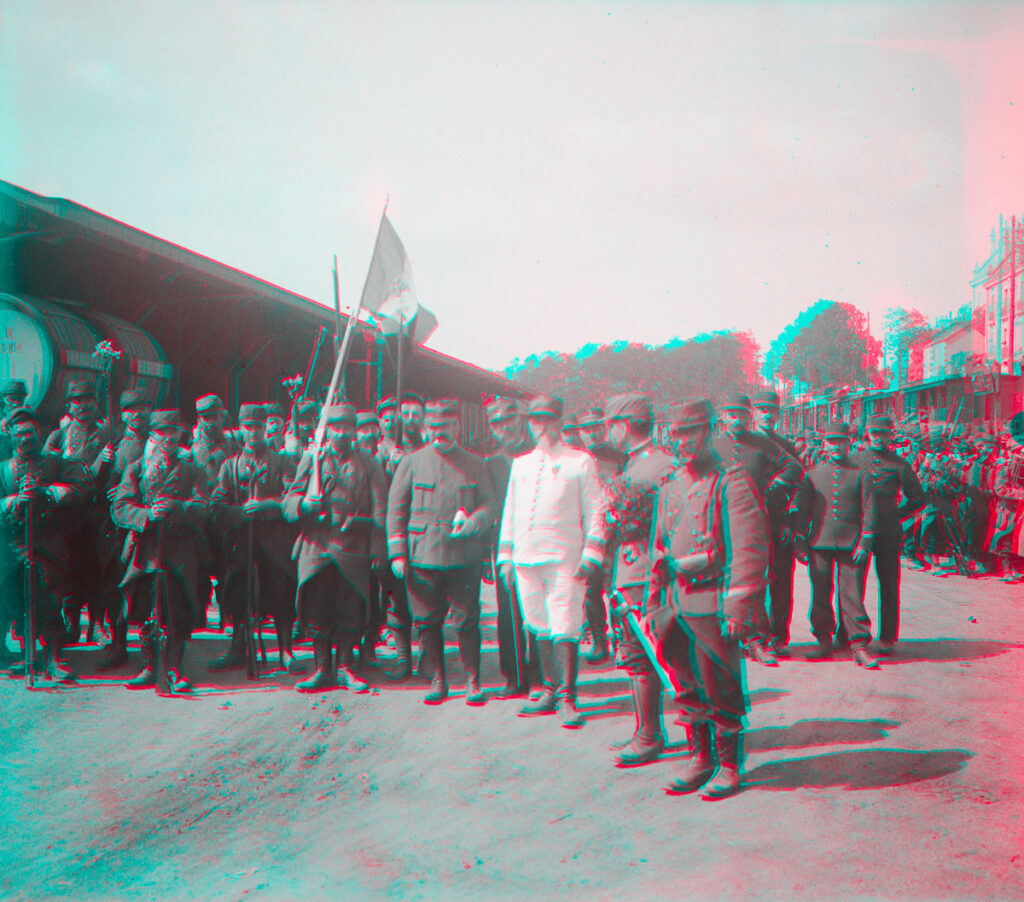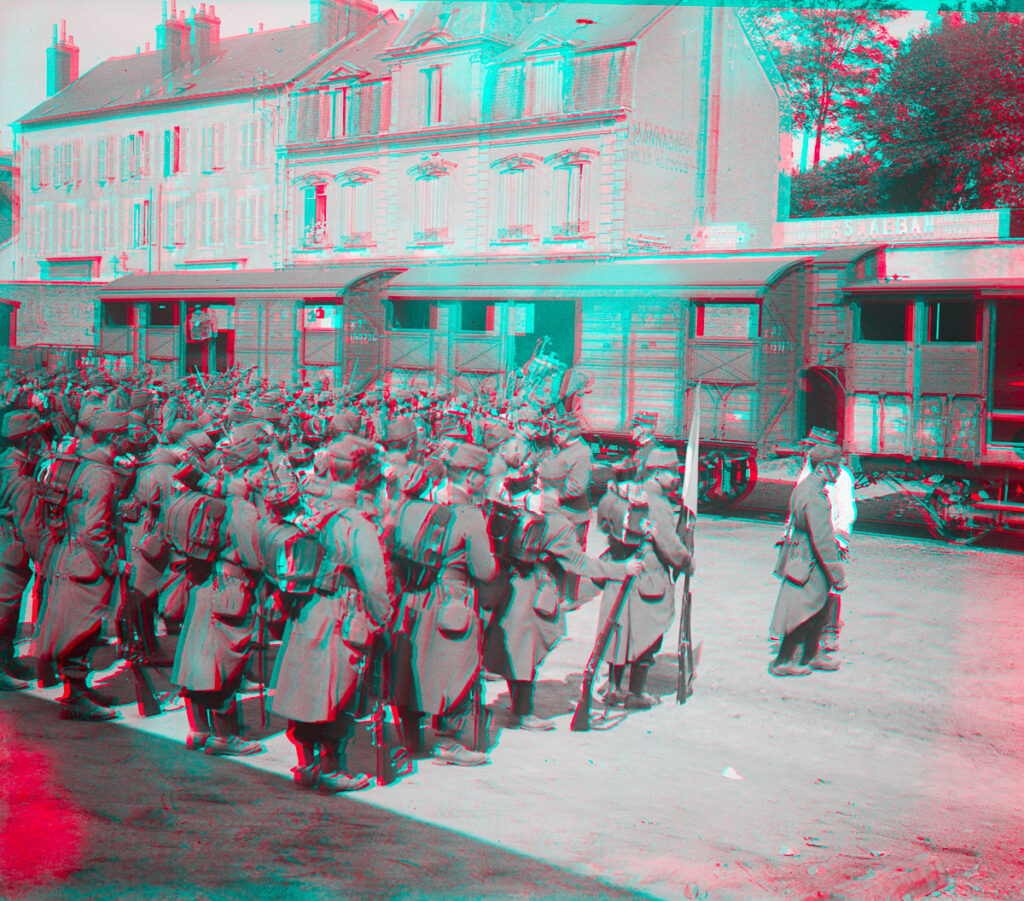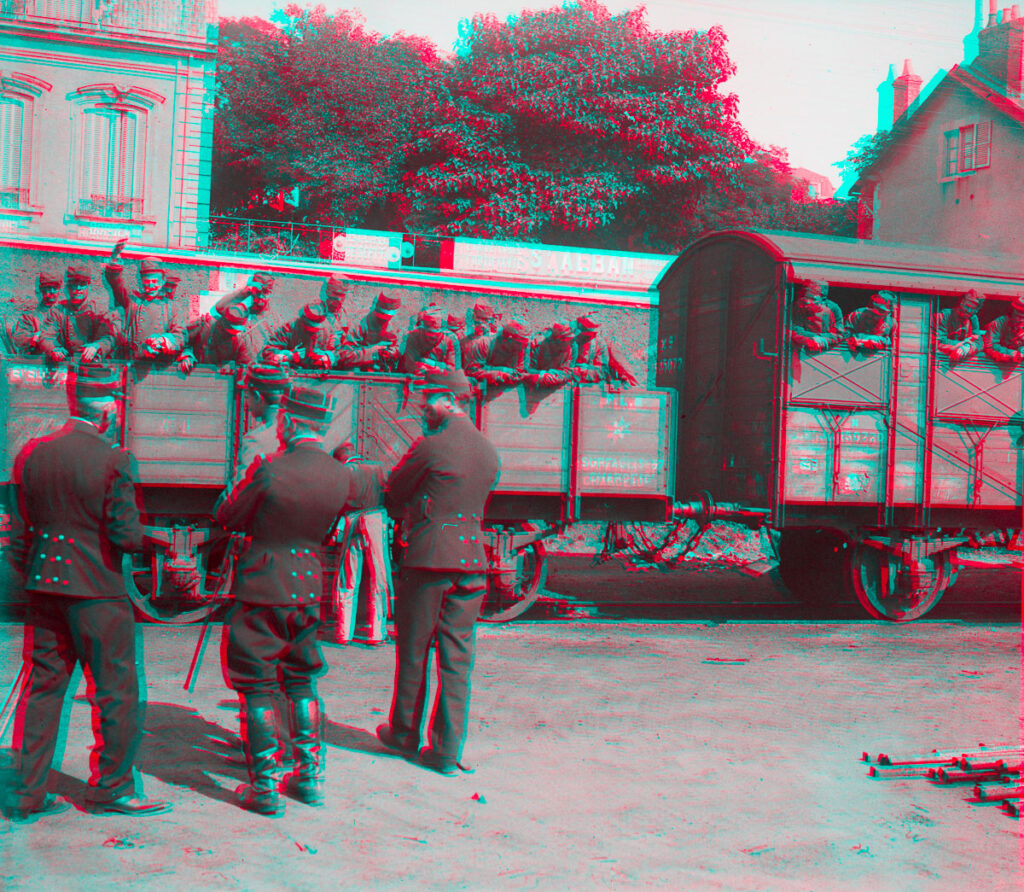The Nevers Collection
written for the stereosite by André Ruiter, Netherlands
The story of 21 stereo glass negatives from the early stages of The Great War in Nevers, France.
The images in this post are anaglyphs and are best viewed by using 3D glasses.
The finding of a treasure
Last year, my attention was drawn to a collection of stereo negatives offered on eBay. It concerned 24 glass plate negatives in the format 8 x 18 cm (3.2 x 7.1 inches). The negatives show images of the mobilisation during the First World War in the city of Nevers in France.
The slides were offered individually, and I managed to get 21 out of 24. Unfortunately I was outbid on three slides, and that’s a shame because such a collection should stay together. But that’s part of the game. You win some and you loose some on eBay.
Two cardboard boxes with descriptions were also shown, but these were not part of the auction. Afterwards I’ve contacted the seller and asked if I could buy the boxes or possibly get a high resolution scan, because I suspected they contained valuable information about the negatives. The seller was kind enough to send the boxes for free because I bought most of the negatives.
The boxes
The two boxes are numbered with the numbers 30 and 31 in Roman numbers. According to the boxes, the total collection consisted of 34 negatives, of which 4 slides from box 31 are probably not related to the war, and were added to the box later.
24 glass plates were offered on eBay, so the collection was no longer complete when it was auctioned.
Of special note is that each negative is numbered, and the number relates to the descriptions on the box. The descriptions contain the subject, place and the exact date, which makes the collection historically significant.
Stereoviews of the First World War were booming after the war, but those that were published in large volumes by publishers such as La Stéréoscopie Universelle or Brentano’s lack this kind of detailed information, or the information is simply not accurate.
About Nevers
The photos were taken on and around the railway station of Nevers. Nevers is located in the centre of France. It has a large railway station and was a logistically important hub for the French army. POW camps and several hospitals were built in and around Nevers during the conflict, which emphasises the importance of Nevers.
Some historic background
The negatives show images of the mobilisation of the French army. The First World War started on July 28, 1914. The direct cause was the assassination of archduke Frans Ferdinand of Austria-Hungary, but the real causes were lying deeper. The assassination triggered a chain reaction, causing all European powers to be at war with each other in a short time.
Germany had declared war on France on August 3, 1914. The photos of the collection were taken in August and October 1914. The first photo dates from August 9, so the war was less than a week old for the French. This makes it very special because images from the early stages of the conflict are rare. Most images date from 1915 to 1918.
In 1914 the war was welcomed by all participating countries, and the horrors of the trenches were still far away in those first weeks. Every country thought it would be victorious, and that all soldiers would be back home by Christmas.
This sentiment is clearly reflected in the photos. The atmosphere is patriotic and relaxed, with smiling soldiers.
What about the photographer?
The name of the photographer is unknown, but I guess it was a professional photographer. Stereo photography in France was dominated in the early 20th century by compact stereo cameras for the 45 x 107mm and 6 x 13cm formats. These formats were introduced by Jules Richard in 1893. He revived stereo photography in France, and his compact formats made photography accessible to amateurs.
Our photographer’s large 8 x 18cm negatives required a large, expensive camera and the skills to operate it, which is less obvious to an amateur. In addition, all negatives are accurately indexed and preserved, which indicates the work of a professional.
More negatives from the same photographer were offered by the seller on eBay. These did not contain images of the war, but were all numbered and indexed in the same way.
I suspect the photographer was from Nevers or the surrounding area, as the photos were taken on different days in August and October. A local photographer could be on site quickly.
My conclusion
I think the photographer was hired by the French army. Most of the photos are staged, which indicates that the photographer had permission to shoot, as photography was censored by the army during the war.
The First World War was the first major conflict in which photography played an important role. In May 1915 the French army founded its own photography section, It was called La Section Photography de l’Armée. This section produced 120,000 photos during the conflict, including 20,000 stereo photos and a large collection of autochrome color images.
Before the creation of the SPA, the French Army simply hired professional photographers. This probably included our photographer, who had to capture the mobilisation for documentation, propaganda purposes, or to inform the public by newspapers. This also explains the accurate descriptions.
Why stereos?
Why did the photographer use a stereo camera? Stereos were primarily intended for entertainment and not necessarily for publication in albums or newspapers. My best guess is that this was just the only camera the photographer had, and the size of the negatives made it possible to use half stereos for printing without any problems.
Special images
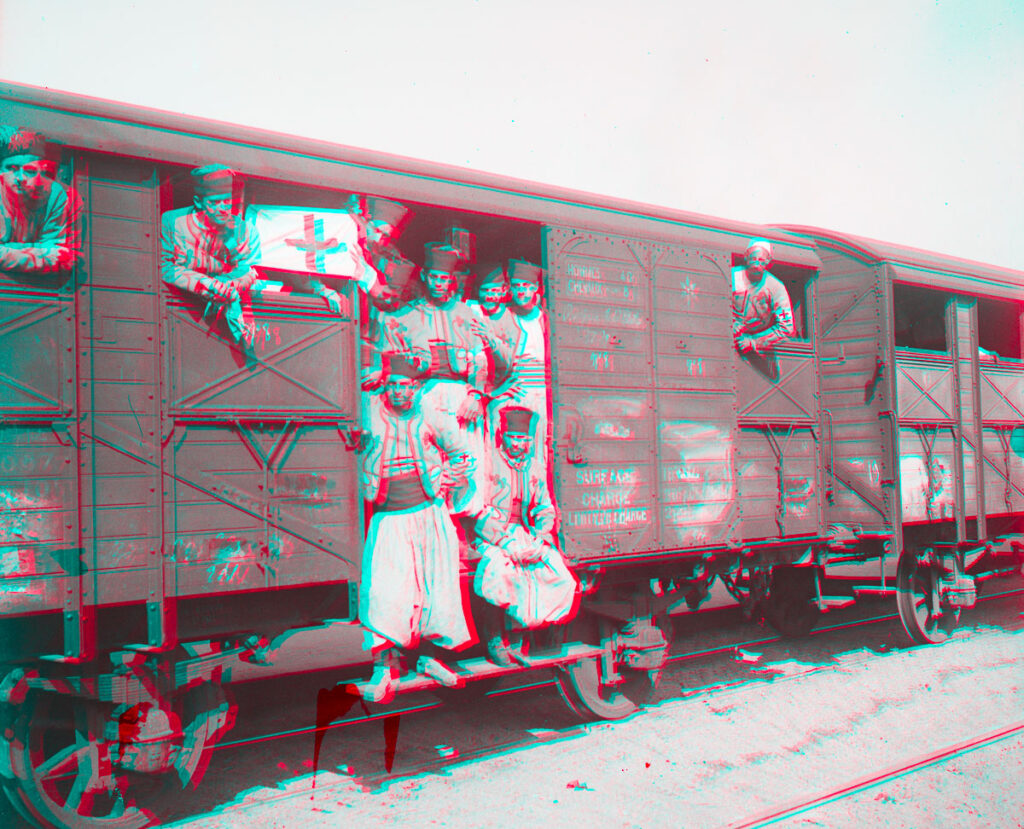
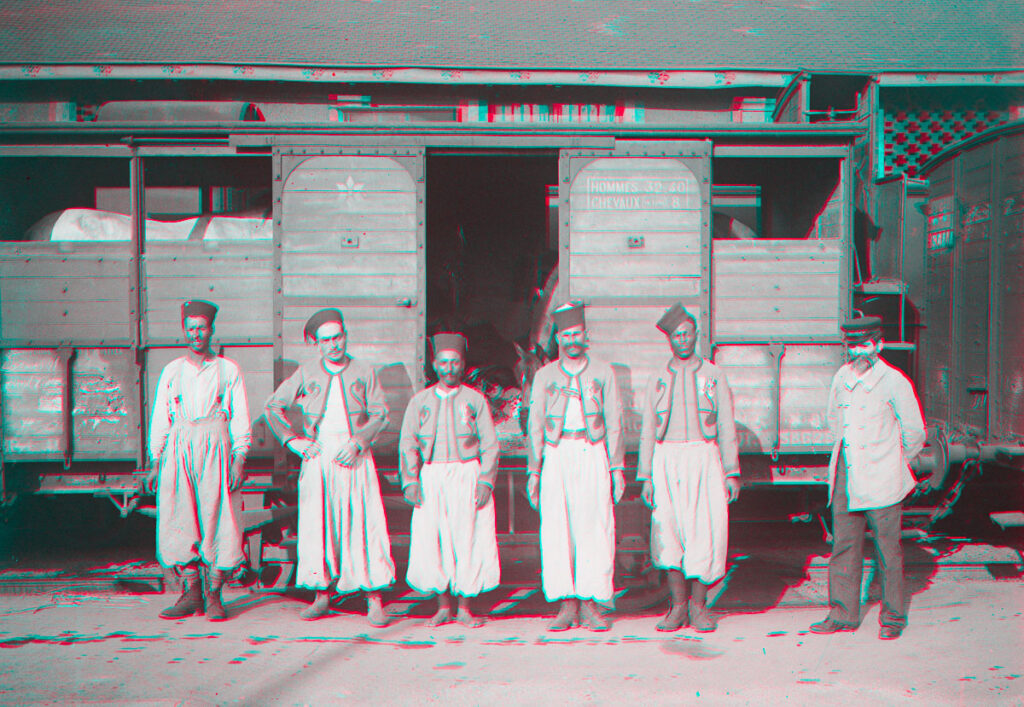
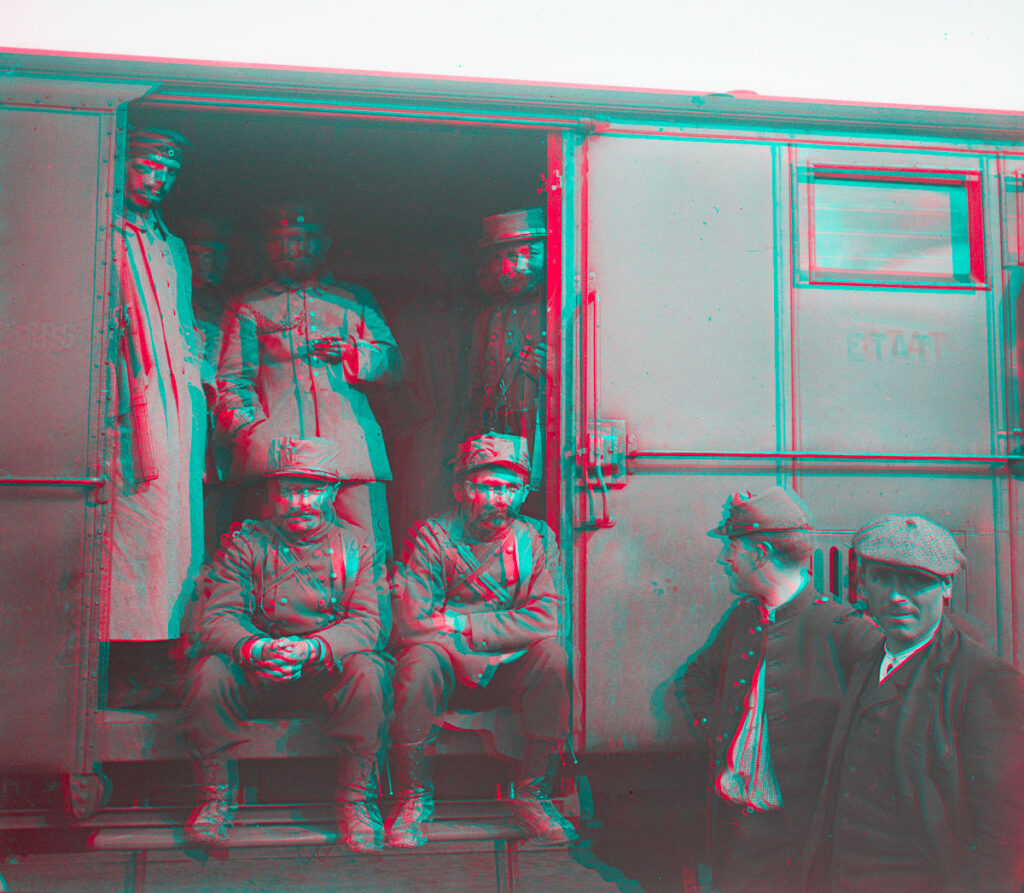
In September 1914, the German advance in France had come to a halt during the Battle of the Marne. From that moment, the Western Front turned into a horrible trench warfare that would last until November 1918. So no soldier would be at home for Christmas…
André Ruiter (Putten, The Netherlands)
I’m a Dutch photographer who specializes in conceptual black & white photography. My photo projects are based on historic themes.
While working on a project about the First World War battlefield of Verdun in France, I discovered French glass stereoviews. This resulted in my great interest in stereo photography and I am now a passionate collector of French and German stereoscopy antiques from 1850 to 1930.
On my website I share my black & white photography and blogs about stereoscopy history and my collection.
Website: www.andreruiter.nl
Instagram-profile: andreruiter
Facebook-profile: andreruiterphotography

